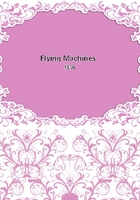
第49章
Owing to the fact that the Wright brothers have enjoined a number of professional aviators from using their system of control, amateurs have been slow to adopt it. They recognize its merits, and would like to use the system, but have been apprehensive that it might involve them in litigation. There is no danger of this, as will be seen by the following statement made by the Wrights:
What Wright Brothers Say.
"Any amateur, any professional who is not exhibiting for money, is at liberty to use our patented devices.
We shall be glad to have them do so, and there will be no interference on our part, by legal action, or otherwise.
The only men we proceed against are those who, without our permission, without even asking our consent, coolly appropriate the results of our labors and use them for the purpose of making money. Curtiss, Delagrange, Voisin, and all the rest of them who have used our devices have done so in money-making exhibitions. So long as there is any money to be made by the use of the products of our brains, we propose to have it ourselves.
It is the only way in which we can get any return for the years of patient work we have given to the problem of aviation. On the other hand, any man who wants to use these devices for the purpose of pleasure, or the advancement of science, is welcome to do so, without money and without price. This is fair enough, is it not?"Basis of the Wright Patents.
In a flying machine a normally flat aeroplane having lateral marginal portions capable of movement to different positions above or below the normal plane of the body of the aeroplane, such movement being about an axis transverse to the line of flight, whereby said lateral marginal portions may be moved to different angles relatively to the normal plane of the body of the aeroplane, so as to present to the atmosphere different angles of incidence, and means for so moving said lateral marginal portions, substantially as described.
Application of vertical struts near the ends having flexible joints.
Means for simultaneously imparting such movement to said lateral portions to different angles relatively to each other.
Refers to the movement of the lateral portions on the same side to the same angle.
Means for simultaneously moving vertical rudder so as to present to the wind that side thereof nearest the side of the aeroplane having the smallest angle of incidence.
Lateral stability is obtained by warping the end wings by moving the lever at the right hand of the operator, connection being made by wires from the lever to the wing tips. The rudder may also be curved or warped in similar manner by lever action.
Wrights Obtain an Injunction.
In January, 1910, Judge Hazel, of the United States Circuit Court, granted a preliminary injunction restraining the Herring-Curtiss Co., and Glenn H. Curtiss, from manufacturing, selling, or using for exhibition purposes the machine known as the Curtiss aeroplane. The injunction was obtained on the ground that the Curtiss machine is an infringement upon the Wright patents in the matter of wing warping and rudder control.
It is not the purpose of the authors to discuss the subject pro or con. Such discussion would have no proper place in a volume of this kind. It is enough to say that Curtiss stoutly insists that his machine is not an infringement of the Wright patents, although Judge Hazel evidently thinks differently.
What the Judge Said.
In granting the preliminary injunction the judge said:
"Defendants claim generally that the difference in construction of their apparatus causes the equilibrium or lateral balance to be maintained and its aerial movement secured upon an entirely different principle from that of complainant; the defendants' aeroplanes are curved, firmly attached to the stanchions and hence are incapable of twisting or turning in any direction; that the supplementary planes or so-called rudders are secured to the forward stanchion at the extreme lateral ends of the planes and are adjusted midway between the upper and lower planes with the margins extending beyond the edges; that in moving the supplementary planes equal and uniform angles of incidence are presented as distinguished from fluctuating angles of incidence. Such claimed functional effects, however, are strongly contradicted by the expert witness for complainant.
Similar to Plan of Wrights.
"Upon this contention it is sufficient to say that the affidavits for the complainant so clearly define the principle of operation of the flying machines in question that I am reasonably satisfied that there is a variableness of the angle of incidence in the machine of defendants which is produced when a supplementary plane on one side is tilted or raised and the other stimultaneously tilted or lowered. I am also satisfied that the rear rudder is turned by the operator to the side having the least angle of incidence and that such turning is done at the time the supplementary planes are raised or depressed to prevent tilting or upsetting the machine.
On the papers presented I incline to the view, as already indicated, that the claims of the patent in suit should be broadly construed; and when given such construction, the elements of the Wright machine are found in defendants' machine performing the same functional result.
There are dissimilarities in the defendants' structure--changes of form and strengthening of parts--which may be improvements, but such dissimilarities seem to me to have no bearing upon the means adopted to preserve the equilibrium, which means are the equivalent of the claims in suit and attain an identical result.
Variance From Patent Immaterial.